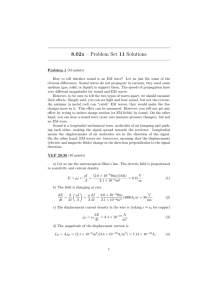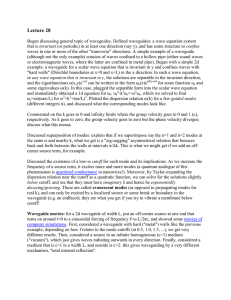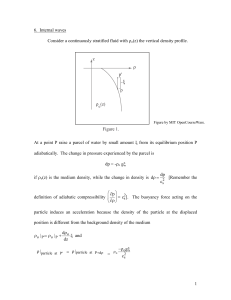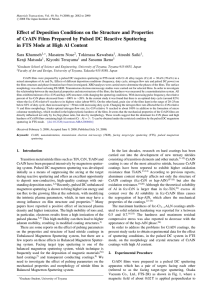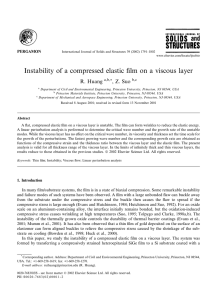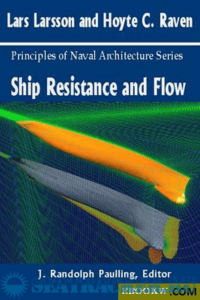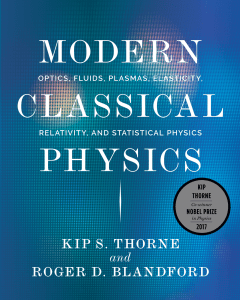Document 13445387
advertisement
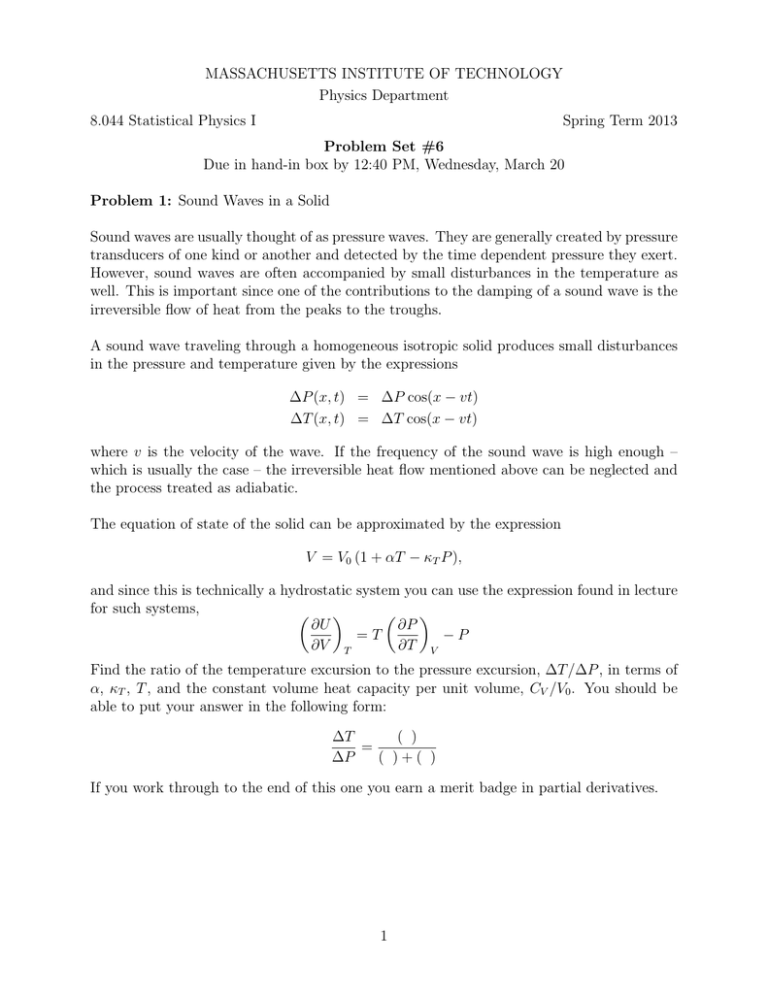
MASSACHUSETTS INSTITUTE OF TECHNOLOGY Physics Department 8.044 Statistical Physics I Spring Term 2013 Problem Set #6 Due in hand-in box by 12:40 PM, Wednesday, March 20 Problem 1: Sound Waves in a Solid Sound waves are usually thought of as pressure waves. They are generally created by pressure transducers of one kind or another and detected by the time dependent pressure they exert. However, sound waves are often accompanied by small disturbances in the temperature as well. This is important since one of the contributions to the damping of a sound wave is the irreversible flow of heat from the peaks to the troughs. A sound wave traveling through a homogeneous isotropic solid produces small disturbances in the pressure and temperature given by the expressions ΔP (x, t) = ΔP cos(x − vt) ΔT (x, t) = ΔT cos(x − vt) where v is the velocity of the wave. If the frequency of the sound wave is high enough – which is usually the case – the irreversible heat flow mentioned above can be neglected and the process treated as adiabatic. The equation of state of the solid can be approximated by the expression V = V0 (1 + αT − κT P ), and since this is technically a hydrostatic system you can use the expression found in lecture for such systems, ∂U ∂P =T −P ∂V T ∂T V Find the ratio of the temperature excursion to the pressure excursion, ΔT /ΔP , in terms of α, κT , T , and the constant volume heat capacity per unit volume, CV /V0 . You should be able to put your answer in the following form: ΔT ( ) = ΔP ( )+( ) If you work through to the end of this one you earn a merit badge in partial derivatives. 1 Note: In each of the following 3 problems you will need to use a Maxwell relation.You have a choice. You can be a masochist and derive it, or you can be street-wise and use the magic square mnemonic. Problem 2: Energy of a Film A surface film has a surface tension S given by S(T, A) = −N kT /(A − b) where b is a constant with the units of area. a) Show that the constant area heat capacity CA is independent of area at fixed temper­ ature. b) Show that the internal energy of the film is a function of temperature alone and find an expression for the energy in terms of the heat capacity. Problem 3: Bose-Einstein Gas Later in the course we will show that a gas of atoms obeying Bose-Einstein statistics under­ goes a phase transition at a very low temperature to another gas phase with quite different properties. [This transition was first observed in the laboratory in 1995 and received a great deal of publicity. Wolfgang Ketterle’s group here at MIT are world leaders in this field. He shared the 2001 Nobel Prize in Physics for his work on Bose-Einstein Condensation.] The equation of state and the heat capacity of the gas below the transition temperature are given by the expressions P (T, V ) = aT 5/2 + bT 3 + cV −2 CV (T, V ) = dT 3/2 V + eT 2 V + f T 1/2 where a through f are constants which are independent of T and V . a) Find the differential of the internal energy dE(T, V ) in terms of dT and dV . b) Find the relationships between a through f due to the fact that E(T, V ) is a state function. c) Find E(T, V ) as a function of T and V . d) Find the entropy, S(T, V ), as a function of T and V . 2 Problem 4: Paramagnet Consider a paramagnetic material where the equation of state relating the magnetization, M , to the applied magnetic field, H, is M = AH/(T − T0 ). T0 and A are constants and the expression is valid only for T > T0 . a) Show that the heat capacity at constant magnetization, CM , is independent of M at constant T . b) Find an expression for the internal energy, E(T, M ), in terms of A, T0 and CM (T ). c) Find the entropy, S(T, M ). 3 MIT OpenCourseWare http://ocw.mit.edu 8.044 Statistical Physics I Spring 2013 For information about citing these materials or our Terms of Use, visit: http://ocw.mit.edu/terms.




